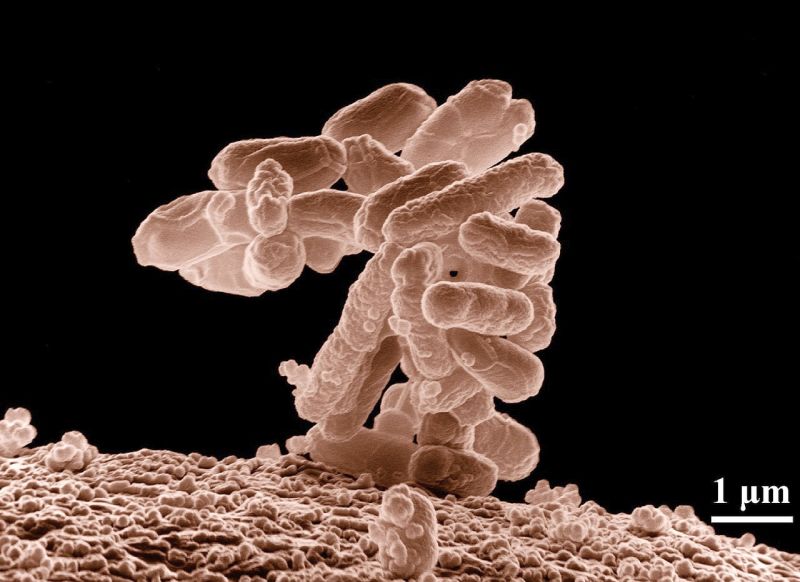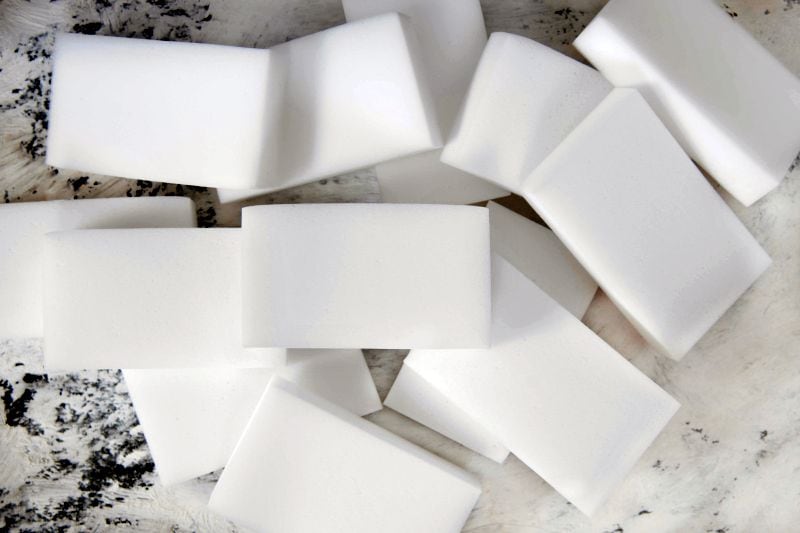[ad_1]
Understanding the issues which can be in your canine’s meals is a vital a part of pet possession. In any case, you need the very best in your pet, and meaning realizing that he’s getting a secure, nutritious food regimen.
However whereas most house owners are acquainted with issues like hen, rice, berries, and carrots, few perceive a few of the components current in lots of canine meals.
However we’re right here to assist! We’ll share a few of the most typical and notable components in canine meals under.
Components in Canine Meals: The Sorts of Issues Producers Add to Canine Meals
Components are included in canine meals for quite a lot of completely different causes, they usually every current completely different advantages and dangers.
Some pet food components are basically innocent and supply appreciable worth, whereas others provide little in your canine and should, in truth, trigger issues.
We’ll begin by wanting on the components which can be often thought of secure after which we’ll shift to people who might current well being considerations.
Components That Are Possible Protected for Canines
The next components in canine meals are usually thought of secure and ought to be of little concern to house owners. You’ll nonetheless wish to seek the advice of together with your vet earlier than choosing a pet food, however these substances are widespread and unlikely to trigger your pet issues.
Pure Flavors
Pure flavors are a few of the most typical components utilized in canine meals. Although they differ, a few of the most typical pure flavors are merely extracts of pure meals that canines discover tasty. This contains issues like hen, beef, or fish meat, in addition to the fat of those (and comparable) protein sources.
Some house owners might not like that these substances are derived through sophisticated means, however they’re not something your canine wouldn’t be consuming anyway.
The one caveat to that is that house owners of canines with meals allergic reactions or intolerances might must scan ingredient labels rigorously.
For instance, in case you have a canine who’s allergic to hen proteins, you’ll wish to make it possible for the salmon– or venison-based pet food you choose doesn’t function pure hen flavors, as this might set off your pup’s allergic reactions.
Pure Preservatives

Canned canine meals don’t often require preservatives – the anerobic (oxygen-free) surroundings contained in the can helps to forestall the meals from spoiling. Equally, fresh-frozen meals usually don’t comprise preservatives, as they’re stored chilly till supplied to your canine.
Dry meals, nevertheless, are a special story.
The fat and proteins contained in kibble-style meals will ultimately spoil, which might make your canine sick. Accordingly, producers typically use chemical substances known as preservatives to forestall kibbles from spoiling.
Typically talking, preservatives fall into one in all two classes: pure and artificial.
We’ll discuss artificial preservatives in a bit, however most pure preservatives utilized in canine meals are broadly thought of secure.
In reality, just a few of the most typical naturally occurring preservatives are fairly acquainted to house owners. They could be known as quite a lot of issues on ingredient labels, however you’ll know them as vitamin E and vitamin C.
Vitamin & Mineral Dietary supplements

Vitamin and mineral dietary supplements are utilized by producers to make sure your pup enjoys a wholesome, nutritionally balanced food regimen. And for probably the most half, they’re thought of secure and no trigger for fear.
In reality, we all know that improperly balanced diets could be dangerous to canines, so an argument could be made that all these components are essential in your canine’s effectively being.
That stated, no less than one model of pet food has devised a option to steadiness their recipes with out using supplemental nutritional vitamins and minerals. Homeowners who wish to keep away from as many pet food components as doable might wish to examine these recipes.
Probiotics

Probiotics are helpful microorganisms which can be added to pet food with the purpose of serving to to advertise correct digestion and stop intestinal points. They could additionally assist with issues equivalent to nervousness, although extra analysis is required.
Most probiotics are micro organism, however there are just a few yeasts positioned below the identical umbrella.
In reality, canines usually have these sorts of helpful microorganisms of their intestinal tracts. Nevertheless, stress, sickness, medicines, and poor-quality meals might trigger their populations to say no. And this, partly, is why producers typically embrace probiotics in canine meals — to assist restore correct steadiness of the intestine flora.
You possibly can acknowledge most probiotics in ingredient lists pretty simply: Merely search for two-word phrases which can be italicized. That is the conference biologists use to label most residing organisms. For instance, you’re a Homo sapiens, whereas your canine is Canis familiaris.
(You might also see Yucca schidigera italicized. This can be a kind of yucca plant added to canine meals to assist scale back the odor of their stools.)
A few of the most typical probiotic strains utilized in canine meals embrace:
- Bacillus coagulans
- Bifidobacterium animalis
- Bifidobacterium bifidum
- Bifidobacterium longum
- Enterococcus faecium
- Lactobacillus acidophilus
- Lactobacillus casei
- Lactobacillus plantarum
- Lactobacillus rhamnosus
Do notice that probiotics should not proper for all canines. Canines with impaired immune methods ought to solely be given probiotics below a vet’s supervision.
Joint-Supporting Compounds

Joint supporting compounds are one other widespread class of pet food components which can be usually secure for many four-footers.
They’re usually included in canine meals to assist shield joint cartilage, and a few can also assist rebuild cartilage that’s been broken. By and enormous, these substances are secure for many canines on the dosages utilized in canine meals. Nevertheless, toxicity issues can happen in canines who ingest an excessive amount of of those substances. Accordingly, it’s best to all the time talk about your selection of pet food together with your vet.
Just a few of the most typical joint-supporting compounds utilized in canine meals embrace:
- Chondroitin: Chondroitin is a component that helps to guard your canine’s joint cartilage from harm. It’s usually sourced from cows.
- Glucosamine: Used to assist your canine construct new joint cartilage, glucosamine could be synthetically created or harvested from shellfish.
- Methylsulfonylmethane (MSM): An anti-inflammatory derived from shellfish or made in a lab, MSM is one other joint complement that’s often included into canine meals.
Along with the dietary supplements mentioned above, some producers embrace issues like Omega-3 fatty acid sources (equivalent to salmon oil) in meals to assist stop or restore joint harm.
However these sorts of omega-3 sources should not true components, as they’ve energy.
Components That Might Current Well being Dangers for Canines
In distinction to the components listed above, the next pet food components might trigger well being issues for canines. Notice that whereas a few of these have been definitively recognized as unsafe, others should not but backed by information that conclusively demonstrates their potential for hurt. Nonetheless, house owners typically desire to keep away from them till extra data is out there.
Synthetic Flavors

The FDA defines synthetic flavors by exclusion – people who don’t match into the definition of pure flavors are deemed, by default, to be synthetic flavors. The verbatim definition is as follows:
The time period synthetic taste or synthetic flavoring means any substance, the perform of which is to impart taste, which isn’t derived from a spice, fruit or fruit juice, vegetable or vegetable juice, edible yeast, herb, bark, bud, root, leaf or comparable plant materials, meat, fish, poultry, eggs, dairy merchandise, or fermentation merchandise thereof.
Now, synthetic flavors are utilized in all kinds of meals — together with loads which can be in your fridge. So, it’s unlikely that your doggo will eat a bowl of kibble that includes some synthetic flavors after which keel over.
However it’s doable that the sustained, long-term consumption of synthetic flavors might trigger issues.
There are all kinds of synthetic flavors and flavoring brokers utilized in some canine meals. The long-term results of many stay poorly understood. Nevertheless, there may be some analysis — equivalent to this 2021 research revealed in Plos One — that demonstrates impaired kidney perform in canines who consumed KH2PO4.
So, it simply makes good sense to keep away from canine meals containing synthetic flavors — if for no different purpose than the truth that they’re pointless! Pet food that’s well-designed and made out of high-quality components tastes good already.
In different phrases, using synthetic flavors is basically a low-upside, high-potential-downside proposition.
Synthetic Colours

A lot of what could be stated for synthetic flavors additionally applies to synthetic colours. A lot of the analysis carried out so far has concerned rodents, somewhat than canines. So, there’s rather a lot we don’t but know concerning the security of synthetic colour in canine meals.
However right here’s the factor: Synthetic colours make even much less sense for canine meals than synthetic flavors do!
Your canine doesn’t care what colour her meals is. She most likely doesn’t even discover the colour of her kibble. Pet food producers use synthetic colours to make meals look interesting to you somewhat than your canine.
Given this, it’s merely smart to keep away from canine meals containing synthetic colours.
Artificial Preservatives

We already defined that the majority widespread pure preservatives are secure. However some artificial preservatives might trigger well being issues when consumed over lengthy durations of time.
Now, as we’ve talked about earlier than (and can accomplish that once more), it is very important perceive that not all pure components are innocent, nor are all artificial components dangerous.
The world isn’t that easy.
Nonetheless, it’s smart to train discretion when selecting meals that make the most of artificial preservatives — particularly given the truth that pure preservatives can be found and recognized to be secure.
A few of the most typical artificial preservatives embrace:
- Propylene Glycol — Pet Poison Hotline does listing propylene glycol as a poisonous substance, nevertheless, it solely seems to trigger issues when consumed in massive quantities. Moreover, the FDA categorizes propylene glycol as a GRAS (Typically Acknowledged as Protected) substance. It’s nearly sure that the small quantities of propylene glycol included in canine meals won’t make your canine sick instantly, however there may be some concern concerning the long-term results it could trigger.
- Ethoxyquin – Ethoxyquin is a typical pesticide and it is very important the rubber-manufacturing course of, however it is usually utilized in canine meals to protect fat and stop the formation of peroxide in canned meals. It’s regarded by most authorities as non-toxic, and it’s accredited to be used in animal feeds by the FDA (offered that it’s used within the correctly recognized method). Nevertheless, the additive does give some house owners pause. One research discovered that ethoxyquin does trigger the buildup a hemoglobin-related pigment within the liver, in addition to elevated ranges of liver enzymes. These modifications look like dose-dependent, which suggests they’re unlikely to trigger issues in small quantities. Nonetheless, the FDA did suggest that pet food producers scale back the extent of ethoxyquin utilized in canine meals. However – and that is vital to notice – most producers who use the ingredient already used lower than the brand new pointers suggest.
- Butylated Hydroxyanisole (BHA) – Butylated hydroxyanisole is an antioxidant chemical that helps to forestall the oxidation and rancidification of fat. The FDA categorizes BHA as a GRAS (usually acknowledged as secure) ingredient, offered that it’s utilized in low quantities and correctly manufactured. Nevertheless, there’s a not-insignificant quantity of proof demonstrating that BHA causes most cancers in some animals. In reality, the U.S. Nationwide Institutes of Well being (NIH) experiences that BHA can moderately be thought of a human carcinogen. The portions of BHA utilized in canine meals are fairly small (lower than 200 elements per million), however as a result of canines are likely to eat the identical kibble or canned meals on a day-in, day-out foundation, it causes some house owners concern.
- Butylated hydroxytoluene (BHT) – Butylated hydroxytoluene is one other chemical used to forestall the fat in a pet food from spoiling. Additionally it is utilized in quite a lot of different purposes, starting from the manufacturing of jet fuels to embalming fluid. The truth that it’s used within the manufacturing of all these probably hazardous substances makes some canine house owners uncomfortable. In and of itself, the looks of BHT in these substances shouldn’t matter a lot – these substances additionally comprise water, and it’s actually not dangerous. BHT has been implicated as a carcinogen in some research, but it surely has additionally been related to a lower in most cancers danger too (in people). There isn’t a lot analysis learning the results of the preservative in canines, however some nations – together with Japan, Romania, Sweden and Australia – have banned its use in meals. Nonetheless, its use remains to be permitted by the FDA.
- Propyl Gallate – Propyl gallate is one other antioxidant used to forestall the oxidation and rancidification of fat. It’s categorized as a GRAS ingredient by the FDA, and it’s usually utilized in comparatively low concentrations in canine meals. It has been proven to be mildly poisonous when ingested, however the greatest concern about this substance pertains to its tendency to behave in comparable methods to estrogen. It has been proven to be a carcinogen in some human contexts, and it could be detrimental to the reproductive well being of those that devour it. As a result of canines fed a meals containing this preservative would possible obtain a big dose of the substance over a protracted time period, many house owners desire to keep away from meals containing it.
- Tertiary Butylhydroquinone (TBHQ) – Tertiary butylhydroquinone is one other substance that forestalls fat from spoiling, and it’s utilized in quite a lot of meals (together with these made for people and canines). The FDA permits such use, however the chemical has been proven to probably trigger DNA modifications and result in precancerous growths. Nevertheless, it has additionally been proven by one research to probably stop most cancers. Suffice to say, extra analysis is critical concerning the security of this ingredient. Nevertheless, till extra information is out there, many canine house owners desire to keep away from meals containing TBHQ.
Melamine

Melamine is a nitrogen-rich natural compound utilized in quite a lot of industrial purposes. It’s utilized in some plates and consuming utensils, it’s one of many major parts of “Magic” erasers, and it’s used within the manufacture of counter tops and a few furnishings. Globally, it’s even used as a fertilizer, although the sort of use is just not permitted within the U.S.
However sadly, it’s additionally been utilized by unscrupulous producers in China to assist increase the obvious protein content material of some meals — together with components utilized in pet meals.
That is very harmful to canines, as melamine is poisonous and might result in extreme kidney harm. It isn’t like a few of the different pet food components mentioned right here, that are included for ostensibly benevolent functions although they could trigger long-term well being issues. Melamine is thought to be very poisonous and is simply used to perpetuate fraud.
The potential risks of melamine contamination have been placed on full show in 2007, when greater than 150 pet food manufacturers discovered it essential to provoke voluntary remembers of their meals. This was a daunting time for canine house owners, and it induced many producers to look extra intently at their ingredient sourcing practices.
As with so many different points of canine vitamin, the difficulty of pet food components is nuanced.
A number of varieties of pet food components should not solely secure however good for some canines. Issues like joint-supporting compounds and probiotics can assist enhance the standard of life for the canines who eat meals fortified with them.
However others might trigger long-term hurt when fed to pets on a day-in, day-out foundation over the course of years. And a few, equivalent to melamine, are acutely poisonous substances, which ought to by no means seem in canine meals.
So, what’s a pet proprietor to do? How do you have to select a pet food?
For starters, stick with meals made by high-quality pet meals producers and, to the extent doable, choose canine meals which can be made within the USA, Canada, Australia, New Zealand, or the European Union. This can enable you keep away from meals which have melamine or different acutely harmful substances.
From there, you’ll wish to educate your self about a few of the pet food components which will trigger long-term hurt — equivalent to these mentioned above. Resolve which of them you suppose could also be value avoiding, talk about the difficulty together with your vet, after which attempt to discover a meals made with out substances that make you uncomfortable.
Hopefully, this can can help you land on a meals that’ll maintain your canine wholesome and joyful for years to return.
Tell us your ideas about pet food components within the feedback under. We’d love to listen to what you suppose!
[ad_2]



0 Comments